Emerald Cup - Ark of Gold: The Quest of SS Otto Rahn of The Third Reich by Howard A. Buechner
Howard Buechner (Colonel Howard A. Buechner)
Emerald Cup - Ark of Gold: The Quest of SS Otto Rahn of The Third Reich (1991)
Paperback: 253 pages
Publisher: Thunderbird Pr (June 1991)
Language: English
ISBN-10: 0913159077
ISBN-13: 978-0913159071
Indiana Jones and Otto Rahn (The Starlog Project: Starlog #152, March 1990)
Writer Robert Dassanowsky-Harris pens an intriguing cover story this issue, “The Real Indiana Jones,” that seeks to tie the fictional film hero to real-life attempts to find holy relics. Dassanowsky-Harris identifies German Holy Grail seeker Otto Rahn as the Indy prototype. Frankly, I’d prefer that he had focused on the Rahn story, which is odd and compelling in itself, rather than try to link every character and plot development to some real-life or mythical antecedent.
Nazis Attack Greenock In Search of Holy Grail
There is a long standing local story about a Nazi U-Boat which apparently managed to enter the Clyde in the midst of World War 2. Many believe that the submarine may have carried Nazi language specialist Otto Rahn, often associated with the Third Reich’s search for biblical artefacts (and the inspiration for the bad guy with the glasses in Raiders of the Lost Ark).
At the time of the U-Boat’s mission, Rahn was believed to be involved in looking for the Holy Grail. It is theorised that Rahn may have been entering the Clyde in order to make his way across country to Rosslyn Chapel, a church built by the Knights Templar and frequently linked with the Grail. However, if Otto Rahn's intended destination was indeed the Templar Church at Rosslyn near Edinburgh, why come in from the opposite end of the country via the heavily defended Clyde? It is entirely possible that if Otto Rahn was on the mysterious U-Boat, he fully intended to start his investigations on the West Coast. Certainly, he need not go as far east as Rosslyn to look into the mysterious Knights Templar; the area surrounding the Clyde has more than it's fair share of Templar connections.
One of Otto Rahn's Grail lakes
La vraie langue celtique et le Cromleck de Rennes-les-Bains.
The treasure of Volkes tectosages.
A Roman proconsul of the name of Cæpion took from a votive lake 80 tons of gold and money and immediately re-melted this into ingots. This apparantly disappeared during its transport towards the port of Narbonne following an attack from Volkes tectosages upset by this profanation of their sacred offerings. They would have then withdrawn to the high valley of the Aude and would have hidden the treasure in this area which is easy to defend.
Boudet speaks directly of the Volkes Tectosages, who became Galatian after Brennus, the Celtic Raven God, took the treasures of Delphi and brought them to Tolosa (Toulouse)[Strabo]. The treasure was cursed and so they threw them into a lake.
Himmler and Otto Rahn's Cathars
Once a faithful Roman Catholic, Heinrich Himmler rejected religion at about the time that a parliamentary decree robbed him of his aristocratic title. Stripped of both his faith and social status simultaneously, Himmler, like the fictional Dieter Bachman of The Blood Lance, threw himself passionately into the Nazi cause. At the same time he became interested in all aspects of the occult.
Himmler does not seem to have been an especially brilliant man but he was educated, sophisticated, and notoriously energetic. As the leader of the SS, he oversaw the activities of the Gestapo; he ran the concentration camps; he provided Hitler ultimately with twelve divisions of elite armoured troops, and he built a massive civilian organisation devoted to German culture. It oversimplifies matters to suggest the SS was Hitler's Praetorian Guard, with Himmler in the role of Tiberius' Prefect, Aelius Sejanus. Likewise, it misses much of the complexity of the SS to say they are like the Knights Templar of the Crusade era. The similarities between the two organisations are probably not accidental, but it was the civilian side of the SS that made the Order of the Skull Himmler's own creation. It was into the civilian branch of the SS that Himmler recruited Otto Rahn.
Roscoe's solution (Part thereof)
In Geography Strabo (64 B.C-23 A.D.) tells of a massive 300 tons of gold and silver bullion that was recovered by the Romans from the Celtic temples at Narbonne. This is near the mouth of the Aude river on the French Mediterranean coast. A further eighty kilometres up the Aude is Rennes-le-Chateau. Strabo attributes the bullion as either an accumulation of Celtic sacred offerings, or else the Celts' loot from the Greek treasuries at Delphi, sacked in 278 B.C. The Romans somehow lost the bullion near Narbonne during Caesar's Gallic Wars and it was never recovered.
The gold was taken from a votive lake by a Roman proconsul by the name of Cæpion. He took 80 tons of gold and money and immediately re-melted this into ingots. This apparently disappeared during its transport towards the port of Narbonne following an attack from Volkes tectosages upset by this profanation of their sacred offerings. They would have then withdrawn to the high valley of the Aude and would have hidden the treasure in this area which is easy to police.
Otto Rahn: To Rennes or not to Rennes?
Claims
“The Emerald Cup-Ark of Gold: the Quest of SS Lt Otto Rahn of the Third Reich”, Colonel Howard Buechner claimed that Otto Rahn visited the Corbières in 1937. This visit is not substantiated. However, there is little doubt in my mind that there is a strong connection between Rahn and Rennes-le-Château. I found these connecting links:
- Rahn’s link to the Cathars whom he loved with great passion;
- The war waged against the Cathars by the Church and the French King, a war of such ferocity that it brings into question the true nature of the cause for which the crusade against Albigensian and Cathar was really launched;
- Rennes-le-Château is seated in the Cathar heartland; Saunière discovering something linked to the “real” story of Catholic geopolitical involvement in the West over the centuries;
- The Vatican not speaking out against the Nazis until close to the end of WWII. What was the Church afraid of?
- Jules Massenet and his librettist Henri Cain for the opera: Don Quichotte and the metaphysical concepts of the necklace image and of the Island of Dreams;
Отто Ран в Википедии
Отто Вильгельм Ран (нем. Otto Wilhelm Rahn (18 февраля 1904, Михельштадт — 13 или 14 марта 1939, гора Куфштайн близ городка Куфштайн, Тирольские Альпы, Австрия) — немецкий писатель и исследователь, археолог-любитель, сотрудник Аненербе, оберштурмфюрер СС.
Otto Rahn in Wikipedia
Otto Wilhelm Rahn (February 18, 1904—March 13, 1939) was a German medievalist and a Obersturmführer (First Lieutenant) of the SS, born in Michelstadt, Germany.
Speculation still swirls around Otto Rahn and his research. From an early age, he became interested in the legends of Parsifal, Holy Grail, Lohengrin, and the Nibelungenlied. While attending the University of Giessen he was inspired by his professor, the Baron von Gall, to study the Albigensian (Catharism) movement, and the massacre that occurred at Montségur. Rahn is quoted as saying that "It was a subject that completely captivated me''".
Work

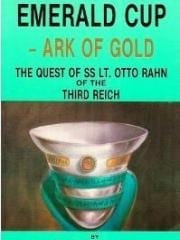

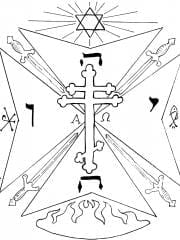
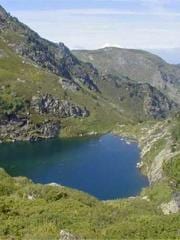
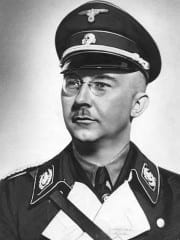
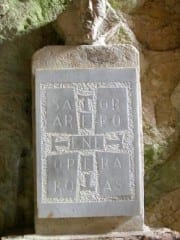
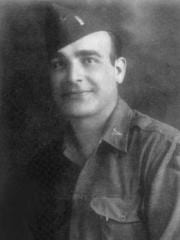


Comentarios recientes
hace 13 años 39 semanas
hace 13 años 39 semanas
hace 13 años 39 semanas
hace 13 años 39 semanas
hace 13 años 42 semanas
hace 13 años 48 semanas